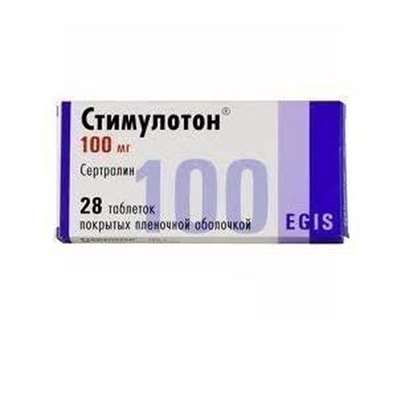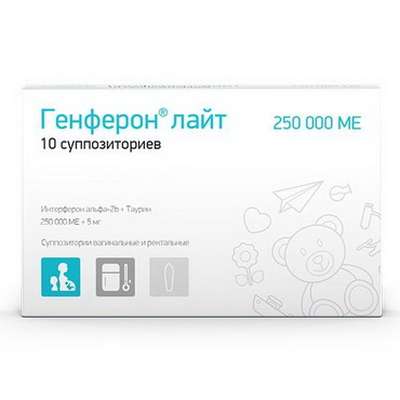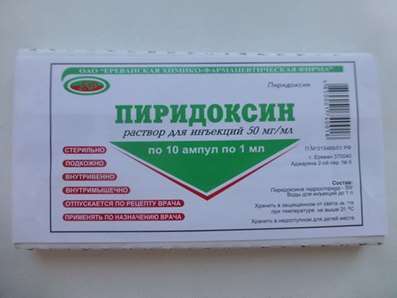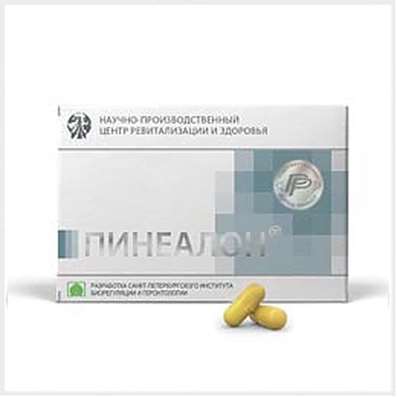Instruction for use: Ketanov
I want this, give me price
Active substance Ketorolac
ATX Code └ĎŇ M01AB15 Ketorolac
Pharmacological group
NSAIDs - Acetic acid derivatives and related compounds
Nosological classification (ICD-10)
M25.5 Pain in the joint
Arthralgia, Pain syndrome in musculo-articular diseases, Pain syndrome in osteoarthritis, Pain syndrome in osteoarthritis, Pain syndrome in acute inflammatory diseases of the musculoskeletal system, Pain syndrome in chronic inflammatory diseases of the musculoskeletal system, Pain in the joints, Soreness of the joints, Soreness of joints in severe physical exertion, Painful inflammatory joint damage, Painful conditions of the musculoskeletal system, Painful joint conditions, Painful traumatic affection of joints, Pain in the musculoskeletal system, Pain in Shoulder Joints, Pain in the joints, Joint pain, Joint pain with injuries, Musculoskeletal pain, Pain with osteoarthritis, Pain in the pathology of the joints, Pain in rheumatoid arthritis, Pain in chronic degenerative bone diseases, Pain in chronic degenerative joint diseases, Bone-joint pain, Joint pain, Arthritic pain of rheumatic origin, Articular pain syndrome, Joint pain, Rheumatic pain, Rheumatic pains
M54 Dorsalgia
Pain in the back area, Pain in the spine, Back pain, Pain in different parts of the spine, Backache, Painful pain syndrome in the spine, Pain in the musculoskeletal system
M54.1 Radiculopathy
Acute sciatica, Radiculopathy, Radiculitis, Radiculitis with radicular syndrome, Acute radiculopathy, Pain syndrome with radiculitis, Subacute radiculitis, Radiculitis, Chronic radiculitis, Diseases of the spinal column
M79.0 Other unspecified rheumatism
Degenerative rheumatic disease, Degenerative and rheumatic diseases of the tendons, Degenerative rheumatic diseases, Localized forms of rheumatism of soft tissues, Rheumatism, Rheumatism with a pronounced allergic component, Rheumatism of the articular and extraarticular, Rheumatic attack, Rheumatic complaints, Rheumatic diseases, Rheumatic disease of the spine, Relapses of rheumatism, Articular and extra-articular rheumatism, Articular and muscular rheumatism, Articular rheumatism, Articular syndrome with rheumatism, Chronic rheumatic pain, Chronic articular rheumatism, Rheumatoid diseases, Rheumatic diseases of the intervertebral disc
M79.1 Myalgia
Myofascial pain syndromes ,Pain syndrome in musculo-articular diseases, Pain syndrome in chronic inflammatory diseases of the musculoskeletal system, Pain in the muscles, Tenderness of muscles, Muscular soreness in severe physical exertion, Painful conditions of the musculoskeletal system, Pain in the musculoskeletal system, Pain in the muscles, Pain at rest, Muscle aches, Muscle pain, Musculoskeletal pain, Myalgia, Muscle pain, Muscle pain at rest, Muscle pain, Muscular pain of non-rheumatic origin, Muscle pain of rheumatic origin, Acute muscle pain, Rheumatic pain, Rheumatic pains, Myofascial syndrome, Fibromyalgia
M79.2 Neurology and neuritis, unspecified
Pain syndrome with neuralgia, Brachialgia, Occipital and intercostal neuralgia, Neuralgia, Neuralgic pain, Neuralgia, Neuralgia of intercostal nerves,Neuralgia of the posterior tibial nerve, Neuritis, Neuritis traumatic, Neuritis, Neurological Pain Syndromes, Neurological contractures with spasms, Acute neuritis, Peripheral neuritis,Post-traumatic neuralgia,Severe pain of a neurogenic nature, Chronic neuritis, Essential neuralgia
R52.0 Acute pain
Acute pain syndrome, Acute pain syndrome with osteoarthritis, Acute pain syndrome of traumatic origin, Severe pain of a neurogenic nature, Severe pain, Pain syndrome at delivery
R52.1 Constant unrestrained pain
Pain syndrome in oncology practice, Pain syndrome pronounced, Pain syndrome in malignant neoplasms, Pain syndrome in cancer, Pain syndrome with tumors, Pain syndrome in cancer patients, Pain in malignant neoplasms, Pain in malignant tumors, Pain in tumors, Pain in cancer patients, Pain in bone metastases, Pain in cancer, Malignant pain syndrome, Intensive chronic pain, Intensive pain syndrome, Intensive non-curable pain syndrome, Intensive chronic pain syndrome, Unrestrained pain, Unrestrained pain, Tumor pain, Post-traumatic pain syndrome, Severe pain, Chronic pain, Chronic Pain Syndrome
R52.2 Other constant pain
Pain syndrome, rheumatic origin, Pain at vertebral lesions, Pain in the chamber, Pain for burns, Pain syndrome weak or moderate, Perioperative pain,Moderate to severe pain, Moderately or weakly expressed pain syndrome, Moderate to severe pain, Ear pain of otitis, Neuropathic pain, neuropathic pain
R52.9 Unspecified Pain
Pain after cholecystectomy, Pain shooting, Non-malignant pain, Obstetric and gynecological pain, Pain syndrome, Pain in the postoperative period, Pain in the postoperative period after orthopedic surgery, Pain of inflammatory genesis, Pain than cancer genesis, Pain syndrome after diagnostic procedures, Pain after surgery Diagnostic, Pain after surgery, Pain after orthopedic surgery, Pain after injuries, Pain after the removal of hemorrhoids, Pain at the non-rheumatic inflammation of nature, Pain in inflammatory lesions of the peripheral nervous system, Pain in diabetic neuropathy, Pain in acute inflammatory diseases of the musculoskeletal system, Pain when the tendon pathology, Pain smooth muscle spasm, Pain spasm of smooth muscles (renal and biliary colic, intestinal spasms, dysmenorrhea), Pain spasm of smooth muscles of internal organs, Pain spasm of smooth muscles of internal organs (kidney and biliary colic, intestinal spasms, dysmenorrhea), Pain in trauma syndrome, Pain with injuries and after surgical interventions, Pain in chronic inflammatory diseases of the musculoskeletal system, Pain with duodenal ulcer, Pain syndrome in gastric ulcer, Pain syndrome in gastric ulcer and duodenal ulcer, pain, Pain during menstruation, pain syndromes, painful condition, Painful foot fatigue, Sore gums when wearing dentures, Soreness of the cranial nerves exit points, Painful menstrual irregularities, Painful dressings, Painful muscle spasm, Painful teeth growth, Melosalgia, Pain in the area of the surgical wound, Pain in the postoperative period, Pain in the body, Pain after diagnostic procedures, Pain after orthopedic surgery, Pain after surgery, The pains of the flu, Pain in diabetic polyneuropathy, Pain for burns, Pain during sexual intercourse, Pain during diagnostic procedures, Pain during therapeutic procedures, for colds Pain, Pain in sinusitis, Pain in trauma, Pain traumatic, The pain in the postoperative period, Pain after diagnostic procedures, The pain after sclerotherapy, Pain after surgery, postoperative Pain, Pain postoperative and posttraumatic, posttraumatic pain, Pain when swallowing, Pain in infectious and inflammatory diseases of the upper respiratory tract, The pain of burns, The pain in traumatic muscle injury, Pain in trauma, The pain of tooth extraction, The pain of traumatic origin, Pain caused by spasm of smooth muscles, Expressed pain syndrome, Expressed pain syndrome, traumatic origin, Postoperative pain, Post-traumatic pain, Post-traumatic pain syndrome, Torpid pain, Traumatic pain, Traumatic pain, Mild pain, Moderately severe pain, Moderate pain, Polyarthralgia with polymyositis
T88.9 Complication of surgical and medical care, unspecified
Pain in the postoperative period, Pain in the postoperative period after orthopedic surgery, Pain syndrome after diagnostic procedures, Pain after surgery Diagnostic, Pain after surgery, Pain after orthopedic surgery, Pain after the removal of hemorrhoids, Pain in the application of excimer laser, Pain with injuries and after surgical interventions, Pain syndromes in the dental practice, Painful diagnostic intervention, Painful diagnostic manipulations, Painful instrumental diagnostic procedures, Painful instrumental manipulation, Painful treatments, Painful manipulations, Painful dressings, Painful therapeutic interventions, Pain in the area of the surgical wound, Pain in the postoperative period, Pain after diagnostic procedures, Pain after orthopedic surgery, Pain during diagnostic procedures, Pain during therapeutic procedures, Pain in orthopedics, The pain in the postoperative period, Pain after diagnostic procedures, The pain after sclerotherapy, The pain after dental surgery, postoperative Pain, Pain postoperative and posttraumatic, The pain of tooth extraction, Inflammation after surgery or injury, Inflammation after orthopedic surgery, Inflammation after surgery, The inflammatory syndrome after surgery, Festering postoperative fistula, Operating wound, Complications after tooth extraction
Composition and form of release
Tablets, coated with a coating.
ketorolac tromethamine 10 mg
auxiliary substances: corn starch; MCC (microcrystalline cellulose); silicon dioxide colloidal; magnesium stearate
film sheath: hydroxypropylmethylcellulose; polyethylene glycol 400 (macrogol 400); talcum purified; titanium dioxide; purified water (lost during production)
in a blister of 10 pcs .; in a pack of cardboard 1, 2, 3 or 10 blisters.
Solution for intramuscular injection 1 ml
ketorolac tromethamine 30 mg
auxiliary substances: sodium chloride; disodium edetate; ethanol; sodium hydroxide; water for injections
in ampoules of 1 ml; in a pack of cardboard 5 or 10 pcs.
Description of dosage form
Tablets: round, biconcave, coated with a coat of white or almost white, with an engraving "KVT" on one side.
Solution for injection: a clear, colorless or pale yellow solution.
pharmachologic effect
Pharmacological action - anti-inflammatory, antipyretic, analgesic.
Pharmacodynamics
Ketorolac has a pronounced analgesic effect, it also has an anti-inflammatory and moderate antipyretic effect.
The mechanism of action is associated with a non-selective inhibition of the activity of the enzyme COX-1 and -2, mainly in peripheral tissues, resulting in inhibition of biosynthesis of PG modulators of pain sensitivity, thermoregulation and inflammation. Ketorolac is a racemic mixture of [-] S- and [+] R-enantiomers, with an analgesic effect due to [-] S form.
The drug does not affect opioid receptors, does not depress respiration, does not cause drug dependence, does not have sedative and anxiolytic effects.
By the strength of the analgesic effect comparable to morphine, it significantly exceeds other NSAIDs.
After intravenous administration and oral administration, the beginning of the analgesic effect is noted respectively after 0.5 and 1 hour, the maximum effect is achieved in 1-2 hours.
Pharmacokinetics
After ingestion, Ketanov« is well absorbed in the gastrointestinal tract - Cmax in blood plasma (0.7-1.1 μg / ml) achieved 40 minutes after taking an empty stomach at a dose of 10 mg. Fat-rich food lowers the Cmax drug in the blood and delays its achievement by 1 h. 99% of the drug binds to blood plasma proteins, and when hypoalbuminemia the amount of free substance in the blood increases. Bioavailability is 80-100%.
Absorption at the / m introduction - complete and fast. After the first 30 mg of the drug Cmax is 1.74-3.1 μg / ml, 60 mg - 3.23-5.77 μg / ml, Tmax - respectively 15-73 and 30-60 minutes.
The time to reach the equilibrium concentration (CSS) for parenteral and oral administration is 24 hours when administered 4 times a day (above the sub-therapeutic level) and is at a dose of 15 mg 0.65-1.13 μg / ml for IV injection, 30 mg - 1.29-2.47 μg / ml; after oral administration 10 mg - 0,39-0,79 mkg / ml. The volume of distribution is 0.15-0.33 l / kg. In patients with renal insufficiency, the volume of distribution of the drug can be doubled, and its R-enantiomer by 20%.
Penetrates into breast milk: after the mother receives the first and second dose of ketorolac (10 mg), Cmax in milk is reached after 2 hours and is 7.3 and 7.9 ng / l, respectively.
More than 50% of the administered dose is metabolized in the liver with the formation of pharmacologically inactive metabolites. The main metabolites are glucuronides, which are excreted by the kidneys, and p-hydroxycetorolac. Output is 91% - kidneys, 6% - through the intestines.
T1 / 2 in patients with normal renal function averages 5.3 hours (3.5-9.2 hours after a / m administration of 30 mg and 2.4-9 hours after oral administration of 10 mg). T1 / 2 is prolonged in elderly patients and is shortened in young patients. The liver function does not affect T1 / 2. In patients with impaired renal function with a creatinine concentration in the blood plasma of 19-50 mg / l (168-442 μmol / l), T1 / 2 is 10.3-10.8 hours, with more pronounced renal failure - more than 13.6 hours .
The total clearance is 30 mg with a dose of 0.023 l / kg / h (0.019 l / kg / h in elderly patients) with oral administration at a dose of 10 mg - 0.025 l / kg / h; with renal insufficiency with a serum creatinine concentration of 19-50 mg / l with a / m dose of 30 mg - 0.015 l / kg / h, with oral administration of 10 mg - 0.016 l / kg / h.
It is not excreted during hemodialysis.
Indications
Pain syndrome of medium and strong intensity of various genesis (including in the postoperative period, with cancer).
Contraindications
increased sensitivity to ketorolac or other NSAIDs, aspirin asthma, bronchospasm, angioedema, hypovolemia (regardless of the cause that caused it), dehydration;
erosive and ulcerative lesions of the gastrointestinal tract in the acute stage, peptic ulcers, hypocoagulation (including hemophilia);
hepatic and / or renal failure (plasma creatinine above 50 mg / l);
hemorrhagic stroke (confirmed or suspected), hemorrhagic diathesis, simultaneous administration with other NSAIDs, a high risk of developing or recurring bleeding (including after operations), impaired hematopoiesis;
pregnancy, childbirth and lactation;
children under 16 years of age (efficacy and safety not established);
anesthesia before and during surgery (due to high risk of bleeding);
treatment of chronic pain.
With caution, bronchial asthma; cholecystitis; chronic heart failure; arterial hypertension; impaired renal function (plasma creatinine below 50 mg / l); cholestasis; active hepatitis; sepsis; systemic lupus erythematosus; old age (over 65 years); polyps of the nasal mucosa and nasopharynx.
Side effects
The incidence of side effects is defined as follows: often - more than 3%; less often - 1-3%; rarely - less than 1%.
On the part of the digestive system: often (especially in elderly patients over 65 years of age, having a history of erosive and ulcerative lesions of the gastrointestinal tract) - gastralgia, diarrhea; less often - stomatitis, flatulence, constipation, vomiting, sensation of stomach overflow; rarely - nausea, erosive and ulcerative lesions of the gastrointestinal tract (including perforation and / or bleeding - abdominal pain, spasm or burning in the epigastric region, melena, vomiting like "coffee grounds", nausea, heartburn, etc.) Cholestatic jaundice, hepatitis, hepatomegaly, acute pancreatitis.
From the side of the urinary system: rarely - acute renal failure, back pain with or without hematuria and / or azotemia, hemolytic uremic syndrome (hemolytic anemia, renal failure, thrombocytopenia, purpura), frequent urination, increased or decreased urine volume, nephritis, swelling renal genesis.
From the senses: rarely - hearing loss, ringing in the ears, visual impairment (including blurred vision).
On the part of the respiratory system: rarely - bronchospasm or dyspnea, rhinitis, laryngeal edema (shortness of breath, difficulty breathing).
From the side of the central nervous system: often - headache, dizziness, drowsiness; rarely - aseptic meningitis (fever, severe headache, convulsions, neck and / or neck stiffness), hyperactivity (mood changes, anxiety), hallucinations, depression, psychosis.
From the cardiovascular system: less often - increased blood pressure; rarely - pulmonary edema, fainting.
From the hemopoiesis: rarely - anemia, eosinophilia, leukopenia.
From the side of the hemostasis system: rarely - bleeding from a postoperative wound, nosebleeds, rectal bleeding.
On the part of the skin: less often - skin rash (including maculopapular rash), purpura; rarely - exfoliative dermatitis (fever with chills or without, redness, densification or flaking of the skin, swelling and / or tenderness of the tonsils), hives, Stevens-Johnson syndrome, Lyell's syndrome.
Local reactions: less often - burning or pain at the injection site.
Allergic reactions: rarely anaphylaxis or anaphylactoid reactions (skin discoloration, skin rash, hives, skin itch, tachypnea or dyspnea, edema of the eyelids, periorbital edema, shortness of breath, shortness of breath, chest pain, wheezing).
Other: often - swelling (face, legs, ankles, fingers, feet, weight gain); less frequent - increased sweating; rarely - swelling of the tongue, fever.
Interaction
Simultaneous use of ketorolac with acetylsalicylic acid or other NSAIDs, calcium preparations, GCS, ethanol, corticotropin can lead to the formation of gastrointestinal ulcers and the development of gastrointestinal bleeding.
Co-administration with paracetamol increases nephrotoxicity, with methotrexate-hepato- and nephrotoxicity. Co-administration of ketorolac and methotrexate is possible only with the use of low doses of ketorolac (control the concentration of methotrexate in the blood plasma).
Probenicid reduces plasma clearance and the volume of ketorolac distribution, increases its concentration in blood plasma and increases its half-life. Against the background of the use of ketorolac, a decrease in the clearance of methotrexate and lithium and the increased toxicity of these substances are possible. Simultaneous administration with indirect anticoagulants, heparin, thrombolytic agents, antiaggregants, cefoperazone, cefotetan and pentoxifylline increases the risk of bleeding. Reduces the effect of hypotensive and diuretic drugs (decreases the synthesis of PG in the kidneys). When combined with opioid analgesics, the doses of the latter can be significantly reduced.
Antacids do not affect the full absorption of the drug.
The hypoglycemic effect of insulin and oral hypoglycemic drugs is increased (dose recalculation is necessary).
Co-administration with sodium valproate causes disruption of platelet aggregation. Increases the concentration in the blood plasma of verapamil and nifedipine.
At appointment with other nephrotoxic medicines (including with preparations of gold) the risk of development nefrotoksichnosti raises. Drugs that block tubular secretion, reduce the clearance of ketorolac and increase its concentration in the blood plasma.
Solution for injection should not be mixed in one syringe with morphine sulfate, promethazine and hydroxyzine due to precipitation. Pharmaceutically incompatible with a solution of tramadol, lithium preparations.
The solution for injections is compatible with saline solution, 5% dextrose solution, Ringer's and Ringer's lactate solution, Plasmalite solution, as well as with infusion solutions containing aminophylline, lidocaine hydrochloride, dopamine hydrochloride, short-acting insulin and heparin sodium salt.
Dosing and Administration
Pills. Inside, once or repeatedly, depending on the severity of the pain syndrome. A single dose of 10 mg, with repeated admission is recommended to take 10 mg to 4 times a day, depending on the severity of the pain; the maximum daily dose should not exceed 40 mg.
If administered orally, the duration of the course should not exceed 5 days.
Injection. V / m (deep), in minimally effective doses, selected according to the intensity of the pain and the patient's reaction. If necessary, it is also possible to additionally prescribe opioid analgesics in reduced doses.
Single doses for single I / m administration:
- patients under 65 years of age - 10-30 mg, depending on the severity of the pain syndrome;
- patients older than 65 years or with impaired renal function - 10-15 mg.
Doses with multiple I / m introduction:
- patients under 65 years of age - 10-30 mg, then - 10-30 mg every 4-6 hours;
- patients older than 65 years or with impaired renal function - 10-15 mg every 4-6 hours.
The maximum daily dose for intramuscular administration for patients under 65 years of age should not exceed 90 mg, and for patients older than 65 years or with impaired renal function, 60 mg.
For parenteral administration, the duration of treatment should not exceed 5 days.
When switching from parenteral administration of the drug to oral administration, the total daily dose of both dosage forms on the day of transfer should not exceed 90 mg for patients under 65 years of age and 60 mg for patients over 65 years of age or with impaired renal function. In this case, the dose of the drug in tablets on the day of transition should not exceed 30 mg.
Overdose
Symptoms: abdominal pain, nausea, vomiting, the occurrence of peptic ulcers of the stomach or erosive gastritis, impaired renal function, metabolic acidosis.
Treatment: gastric lavage, the introduction of adsorbents (activated charcoal) and the conduct of symptomatic therapy (maintenance of vital functions in the body). It is not excreted sufficiently by dialysis.
special instructions
The effect on platelet aggregation stops after 24-48 hours.
Hypovolemia increases the risk of adverse reactions from the kidneys. If necessary, you can prescribe in combination with narcotic analgesics.
Ketanov« is not recommended for use as a means for premedication, which supports anesthesia and anesthesia in obstetric practice.
Do not use simultaneously with paracetamol for more than 5 days. Patients with a blood clotting disorder are prescribed a drug only with a constant control of the number of platelets, which is especially important in the post-operation period when careful monitoring of hemostasis is required.
As a significant part of patients with the appointment of Ketanov « develop side effects from the side of the central nervous system (drowsiness, dizziness, headache), it is recommended to avoid performing work requiring increased attention and quick response (driving vehicles, working with mechanisms, etc.).
Conditions of leave from pharmacies
On prescription.
storage conditions
In a dry, the dark place at a temperature of no higher than 25 ░ C.
Keep out of the reach of children.
Shelf Life
3 years.
Do not use after the expiry date printed on the package.

 Cart
Cart





